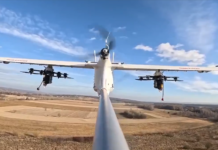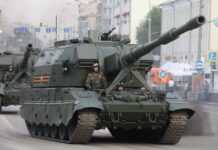Unmanned Aerial Vehicles (UAVs) have become a crucial asset on the battlefield in the last decades. Initially a niche product that only a few of the best funded armies in the world could afford, these systems are now broadly used by state and non-state actors, and the war in Ukraine has clearly proved their importance in conventional conflicts as well. Are EU countries ready to take up the challenge, as users and as producers?
In recent decades, UAVs have mainly helped regular armed forces carry out intelligence, surveillance and reconnaissance (ISR) missions in non-contested airspace. Unmanned systems were mostly redeployed for persistent information gathering in asymmetric conflicts opposing a regular armed force and/or a non-state actor. With the systems evolving to mount weapons, their use was then expanded to ad-hoc strike missions, mainly to clear the battlefield before the arrival of ground troops. During the 2000s, these two roles made up the most frequent unmanned aerial missions in Iraq and Afghanistan. About a decade later, the same kind of missions were carried out during the war in Libya.
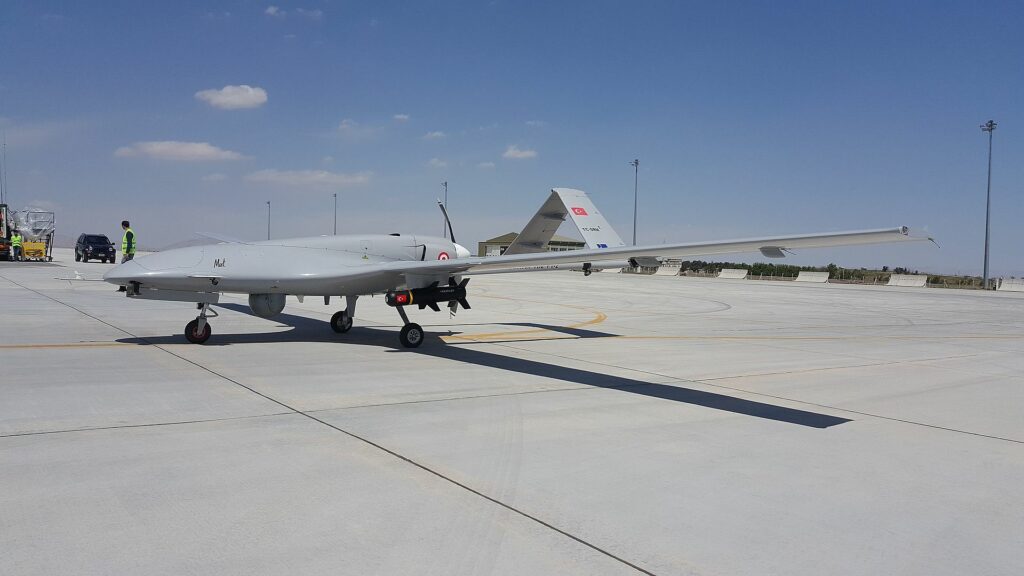
Credit: Bayhaluk, via Wikimedia Commons
As the use of these systems has proven to be increasingly effective, a growing number of companies and countries are now developing this kind of technology. The miniaturisation has gradually allowed non-state actors acquire small UAVs and redeploy them in strike missions, such as the Houthi’s attacks against Saudi Arabia’s critical infrastructure demonstrate.
The 2020 Nagorno-Karabakh conflict represents a game changer in the deployment of unmanned systems on the battlefield, marking the first large-scale use of unmanned aerial technology in a conventional state-on-state conflict. In fact, UAVs, and in particular loitering munitions (LMs), had already been used in an earlier phase of the conflict in 2016. However, in September-November 2020 Azerbaijan’s UAVs first destroyed Armenia’s substantial array of ground-based air defence (GBAD) systems, followed by Yerevan’s land forces materiel, including tanks, artillery, and supply trucks. For the first time, unmanned vehicles were replacing manned systems for air attack and close air support (CAS) missions in a regular conflict.
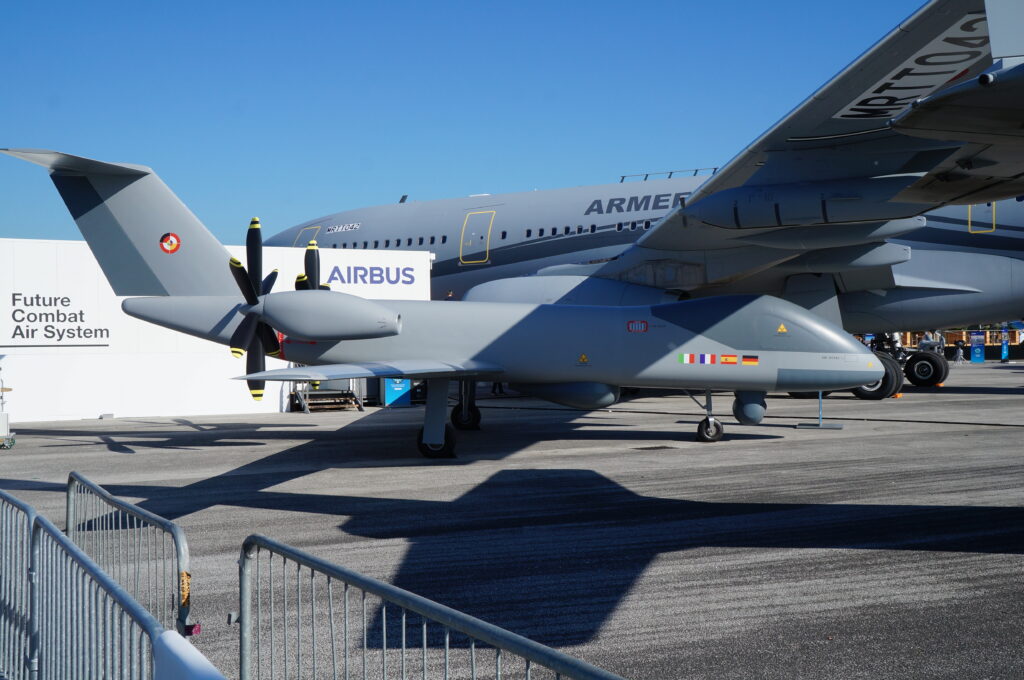
Credit: Giulia Tilenni
More recently, the war in Ukraine has reaffirmed the importance of UAVs on the battlefield. The first regular conflict on European soil in decades sees a significant use of regular weapon systems, such as tanks and artillery, but also the massive use of UAVs by both sides. As neither Russia nor Ukraine have been able to achieve air superiority, the two parties have been deploying tactical UAVs to reduce risks when carrying out strike missions. Moreover, intelligence provided by small UAVs has been a game changer in different battles. In March 2022, the Ukrainian Aerorozvidka air reconnaissance unit, consisting of 30 special forces troops and UAV operators, detected a 65-km-long Russian mechanised column tasked with mounting an attack in the north of the country, most likely with Kyiv as its ultimate objective. After several days halted on the route, the Russian operation failed due to Aerorozvidka’s nightly ambushes, mainly based on attacks by UAVs.
Since then, Ukraine has considered unmanned aerial assets as a cost-effective tool in countering Russian attacks. In February 2023, the Ukrainian Deputy Prime Minister and Minister for Digital Transformation Mykhailo Fedorov, said that Kyiv had purchased 1,765 UAVs for USD 3.4 Bn and trained about 3,500 soldiers in their use. Last June, President Zelenskyy launched the “Army of Drones” crowdfunding campaign and called on hobbyists and commercial drone pilots to donate their machines to regular Ukrainian troops.

Credit: Giulia Tilenni
Kyiv’s inventory comprises several models, their pre-war fleet of around 20 Turkish-made Baykar Bayraktar TB2 was supplemented by a further 50 according to Ukrainian Defence Minister Oleksii Reznikov. Added to these, Ukraine has received roughly 850 Prox Dynamics Black Hornet micro-UAVs, and weaponised commercial off-the-shelf UAVs to drop explosives, not dissimilar to ISIS’ techniques. As part of the significant military aid pledged to the country, the US approved the delivery of several UAV models in February 2023. These systems include the Area-I ALTIUS-600 LM (which has a swarming capability, and was tested as an electronic warfare (EW) platform). Also delivered was the AeroVironment Jump 20 UAV with vertical take-off and landing (VTOL) capability, as well as a 14-hour endurance and a range of 185 km; and the AeroVironment Switchblade 600 LM, which can carry a 14 kg payload for 40 minutes within a 40 km range.
In the meantime, Ukraine is significantly investing in the development of locally-produced UAVs. In an interview with Reuters in March 2023, Defence Minister Reznikov said that the Government was working with about 80 Ukraine-based producers, adding that Ukraine required hundreds of thousands of UAVs. Kyiv, which has set up drone assault units within its armed forces, plans to invest USD 550 M on these systems in 2023 alone, with a focus on loitering munitions. Coupled with foreign supplies of tanks, missiles and artillery assets, the development of domestic UAVs, which are substantially cheaper compared to traditional weapon systems, might help in reducing the capability gap with Russia. During the first year of war, the deployment of UAVs on the battlefield has maximised Ukrainian reconnaissance capabilities. The country is now seeking the use of assets that can travel longer and carry larger payloads.
Baykar Technologies is emerging as one of the big winners in the conflict. Now that the place of Medium-Altitude Long Endurance (MALE) strike UAVs on the modern battlefield has been well-established, Baykar is expected to further increase its global market share and is starting to sell its UAVs to EU members. Although EU defence companies possess all the know-how required to develop UAVs, their development is quite complex, and armed forces have strong capability gaps in this domain. Let’s try to understand why.
Programmes within the EU: a fragmented landscape
The EU military mission in Libya in 2011 confirmed the importance of UAV-carried ISR missions, suggesting to European countries that unmanned technology would have been the best solution to fill the long-lasting capability gap in this domain, which first emerged during operations in the Balkans in the early 1990s. Since then, some EU members have acquired US or Israeli off-the-shelf MALE UAVs, and/or launched national programmes to develop tactical systems, while trying to develop a common MALE system to gain strategic independence. In the meantime, France, Germany, Italy and Spain are all involved in programmes to develop next-generation fighters – the first three within the Future Combat Air System (FCAS) programme, the latter within the Global Combat Air Programme (GCAP) with the UK and Japan. Both efforts take a system-of-systems approach integrating different types of unmanned systems. Several major EU countries have launched several development projects simultaneously, hoping to relaunch their national defence industries. However, their ambitions have been at odds with the slow recovery from decades of underinvestment in defence, and the need to focus on the replacement of all sorts of ageing equipment and weapon systems at once.
Eurodrone – The Quest for a European MALE UAV
France, Germany, Italy and Spain launched the medium-altitude long-endurance remotely piloted aircraft system (MALE RPAS) programme, also known as MALE 2020 (and later: Eurodrone), in August 2016, within the framework of the Organisation for Joint Armament Co-operation (OCCAR). The idea to jointly fill the already mentioned gap in ISR capabilities with ITAR-free technology, to gain independence from the US and the other non-EU producers, dates back to 2013. When the programme was launched, the four countries all had some experience with MALE systems. Italy was among the users of the General Atomics MQ-9 Reaper and MQ-1 Predator, which had already been deployed in the Middle East and just received Congress’s authorisation to mount Lockheed Martin AGM-114 Hellfire missiles. France already had the General Atomics MQ-9 Reaper in its inventory for a couple of years, and Spain had just ordered a batch of them. Germany had several years of experience with the Israel Aerospace Industries (IAI) Heron TP, in use in Afghanistan under a lease agreement.
After a definition study that lasted two years and ended with the 2018 System Requirement Review (SRR) and a System Preliminary Design Review (SPDR), two additional years were devoted to the elaboration of the offer and the negotiation of the global contract. Prime contractor Airbus Defence and Space GmbH and major sub-contractors Airbus Defence and Space S.A.U, Leonardo and Dassault Aviation, finally signed a contract on 24 February 2022, agreeing on the development of 20 systems (seven for Berlin, five for Rome, four for Paris and Madrid), each one consisting of three flight units and two ground control stations.
According to the initial schedule, the first flights of a prototype were expected in early 2023, and the delivery of the final system in 2025. However, the programme is behind schedule due to fundamental divergences in core technical features, namely propulsion and armament, and on the final costs. Germany, which wants the system to be used above its national territory, pushed for the twin-turboprops in a pusher configuration. This is a solution that increases safety during flight in non-segregated airspaces, but brings the weight of the system to 11 tonnes, compared to the Reaper at 4.5 tonnes. In a document released in June 2019, the French Senate pointed out the systems’ ’obesity’, barely compatible with the country’s need to redeploy it in operational theatres, mainly in Africa.
After long discussions, Berlin finally agreed on a system with strike capabilities.
Able to carry out intelligence, surveillance, target acquisition and reconnaissance (ISTAR) missions, each UAV will have an endurance of 30 hours, a 13.7 km service ceiling, and a 500 km/h maximum speed. With a length of 17 m and wingspan of 30 m, it will be 1.5× larger than the MQ-9 Reaper. Its maximum payload is estimated at 2,300 kg.
According to the latest information available, the production of the first prototype is now scheduled in 2024 and the beginning of flight tests in 2027, with first deliveries likely at the end of the decade.
As was the case for the A400M, the Eurodrone programme highlights the limits of pan-European defence cooperation. As participating nations have different operational needs, the definition of the systems’ features took a long time, and finally ended in sub-optimal specifications. Moreover, delays in production forced the parties to purchase off-the-shelf systems again, and might further delay the Future Combat Air System (FCAS) programme, a system-of-systems supposed to integrate the Eurodrone. The possible failure of the Eurodrone, among the first programmes to receive a grant under the European Defence Fund kicked off in 2021, might discredit EU efforts towards a stronger defence base, undermining an EU independence deemed necessary but far from being a reality.
A Plethora of Tactical Unmanned Systems
EU countries with the most advanced armed forces have all reaffirmed the importance of fielding tactical UAVs in their strategic documents. Despite the similar operational requirements, most decided to go for national solutions, resulting in the multiplication of programmes. This choice is likely driven by political-industrial considerations, namely, the possibility of helping national defence companies develop and produce new systems at relatively limited costs. According to results obtained so far, this vision is short-sighted, with several programmes delayed due to COVID-19, thus increasing armed forces’ capability gaps, as well as R&D and acquisition costs, which had been expected to be limited for this type of asset.
In April 2022, Rheinmetall announced the development of the LUNA NG, an advanced version of the EMT Luftgestützte Unbemannte Nahaufklärungs Ausstattung (LUNA) UAV, which has been in service with the German Armed Forces since the early 2000s. The new system has an endurance of 12 hours, a range of 100 km, a service ceiling of 5,000 m, in addition to a 40 kg take-off weight and a 30 kg maximum payload. Compared to its predecessor, the LUNA NG can have a reconnaissance or combat configuration, being able to mount the Hero-R rotary-wing loitering munition recently developed by Rheinmetall in collaboration with the Israeli company UVision. If this collaboration allows for having state-of-the-art combat capabilities, it is worth noting that the contract for the development of three unmanned systems with five UAVs each was awarded in July 2017, with deliveries initially expected in 2020. However, the Bundeswehr has still not received any of these UAVs.
Looking at France, the latest military programming law (Loi de Programmation Militaire, LPM) allocates EUR 5 Bn in unmanned aerial technology between 2024 and 2030. Paris stressed its willingness to maintain investment in naval UAVs, to increase the number of tactical UAVs in use with the Army, and to develop French-made loitering munitions. This batch of investments is supposed to fuel the efforts begun under the 2019-2025 document, but some of the systems are not operational yet, or have been recently delivered to their end-users. The Patroller UAV was developed by Safran and intended to replace the ageing fleet of Sagem Sperwer UAV. In 2016, Paris signed a EUR 330 M contract for 14 Patrollers, later revised upwards to 25 units with the 2019-2025 LPM. Due to enter service in 2019, the system only received certification for operational use in February 2023, and deliveries are due to take place out to 2030.
Final Remarks
Since their role on the battlefield began to grow with the Wars in Afghanistan and Iraq in the 2000s, UAVs have gradually become a key aerial asset on the battlefield, both for symmetric and asymmetric conflicts. The importance of these systems has launched a global race not only for their acquisition, but also for their development. Unable to access the Western market, dominated for a long time by the General Atomics MQ-9 Reaper and MQ-1 Predator and the Israeli Aerospace Industry Heron, China and Turkey have developed a broad range of competing systems. Cheaper than Western systems and exported without strings attached, they have conquered African and Asian markets in recent years.
By focusing on building the best possible MALE UAVs, despite different operational requirements, EU countries are lagging behind in terms of production, and will likely be unable to find a place in the global UAV market. Worse still, their efforts to build a common system are preventing them from filling a capability gap identified two decades ago. As other EU defence cooperative programmes have shown in the past, developing an ambitious multinational programme can end in late deliveries of expensive systems that have average technical features resulting from a compromise among all the relevant operational requirements.
Unfortunately, the Eurodrone case seems to follow this logic: the countries involved are investing a lot of time and money in a technological solution that will barely be useful for its end-users. Miniaturisation has allowed for high-performing tactical UAVs with interesting payloads, able to perform strike missions in support of ground forces. This is a trend that has spread over the last decade, but one that EU countries do not seem able (or willing) to identify. Overly-focused on trying to find a compromise solution on the Eurodrone, most EU countries underestimated the urgency to boost the range and number of tactical UAVs in their respective inventories. Considering the know-how present in different European defence companies and the similar operational requirements across Europe, going for just one or a couple of EU solutions to develop tactical UAVs might have been a more efficient decision. Conversely, the biggest defence spenders focused on the development of national tactical UAVs, or off-the-shelf purchases, thus deepening market fragmentation and the dependence on non-EU producers.
On the one hand, the launch of new programmes seems to be purely driven by political objectives, such as increasing the production of national companies to maintain employment levels or create new jobs, rather than military ones. As an example, the Spanish Ministry of Finance recently authorised a EUR 500 M investment in the development of the Sistema Remotamente Tripulado de Altas Prestaciones (SIRTAP) tactical UAV, to be divided into eight annual payments between 2023 and 2031. Co-funded by Spain and Colombia, expected to purchase 27 and 18 units respectively, the system will be developed by Airbus. The vehicle will have an endurance of 20 hours, a service ceiling of 6,000 km, a 750 kg maximum take-off weight, and a 150 kg payload. These are almost the same characteristics as the Leonardo FALCO EVO, reportedly in use in several Middle Eastern countries, but not in the inventories of any European customer.
On the other hand, national preferences force countries with limited budgets or urgent operational requirements to procure non-EU, off-the-shelf products. This is the case for Poland, which ordered four Bayraktar TB2 UAVs in May 2021, thereby becoming the first EU user. Poland also concluded a lease agreement with General Atomics for several MQ-9A Reapers to prepare an eventual purchase. In April 2023, Romania became another EU customer for the Bayraktar TB2, ordering 18 UAVs for EUR 280 M.
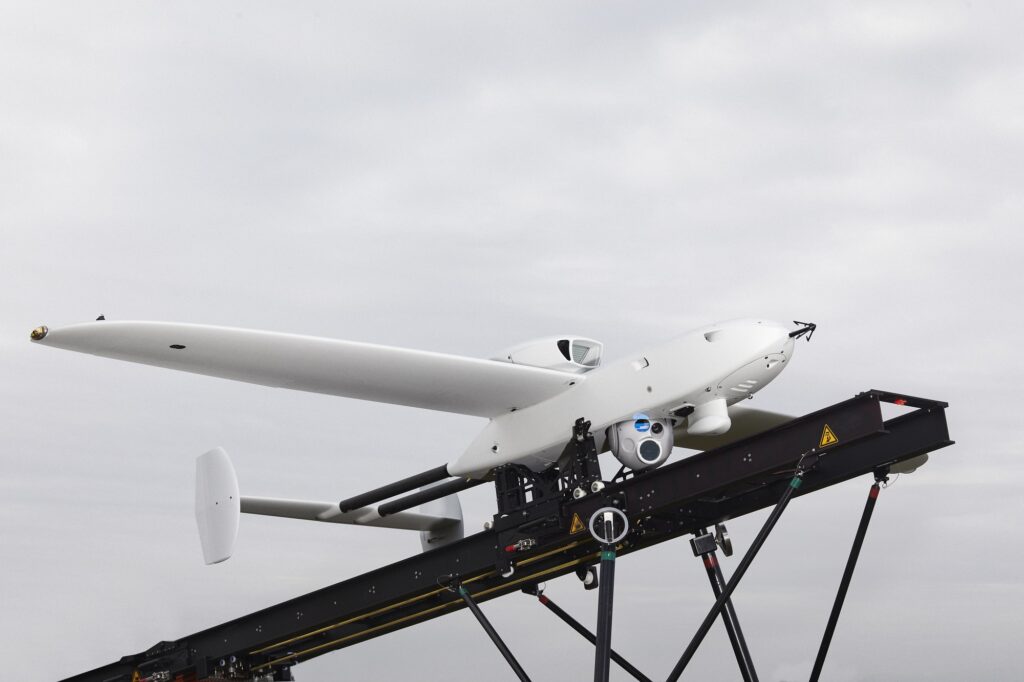
Credit: Rheinmetall
‘Hope Springs Eternal’
If accompanied by strong and long-lasting political will, two trends might still help the EU recover, and enter this race again. First, trying to push ahead with meaningful cooperative programmes. In 2021, Spain, Germany, Portugal, Romania and Slovenia decided to launch the Next Generation Small RPAS (NGSR) project within the Permanent Structured Cooperation (PESCO) framework. This Spanish-led project is intended to develop a multi-role, next-generation tactical UAV, with a range of approximately 200 km and an endurance of 5 to 10 hours. The system should be rapidly deployable to support military operations in the land, air and maritime domains, but also be used for law enforcement, disaster management and other civilian missions. The first prototype should be ready in 2026, and tests should be completed by 2027, with a development that runs in parallel with the Euromale. This system might be an interesting test bed for the impact of EU funding on procurement, as the European Defence Fund is supposed to support the joint procurement of the system once operational.
Second is the little-discussed case of Greek know-how. Greece is not at the heart of cooperative programmes despite its strong and long-lasting experience with locally made UAVs. The Hellenic Aerospace Industry (HAI) Pegasus, whose development started in 1979, was delivered to the Greek Air Force in the early 2000s with the upgraded version, Pegasus II, introduced in 2005. Considering Turkish assertiveness and relevant know-how in UAVs, Greece has decided to build up its capacities to boost its national production while continuing to procure abroad – mainly in Israel. In September 2022, HAI and the Aristotle, Thessaly and Democritus universities presented Archytas, a multipurpose, dual-use, VTOL UAV, with significant surveillance and reconnaissance capabilities. In January 2023, Athens announced that the consortium would also develop the Grypas combat UAV. With a more modular structure and a larger payload than its predecessor, a first prototype is expected in 2025. Greece will officially be the first customer, but other countries willing to buy European might follow.
Giulia Tilenni



![Developments in strike UAVs The Flyby Jackal launches an LMM during testing. [Crown Copyright 2023]](https://euro-sd.com/wp-content/uploads/2025/07/Jackal_Crown-Copyright-Kopie-218x150.jpg)


![Countering the aerial threat Based at NAS Key West in Florida, US Naval reserve squadron VFC-111 operates the F-5N Tiger II in the aggressor role. [USMC/SSgt Dengrier Baez]](https://euro-sd.com/wp-content/uploads/2025/06/A1-Kopie-218x150.jpg)
![Beyond the drone line: Lessons from the drone war in Ukraine A typical RF controlled FPV drone, shown during take-off. These little platforms have already reshaped the battlefield significantly, but in many ways have not yet reached their full potential. [Armyinform]](https://euro-sd.com/wp-content/uploads/2025/06/RF-FPV-Drone-Takeoff_Armyinform-Kopie2-218x150.jpg)
![After DEFEA 2025: IMCO Group Advances Strategic Partnerships Across Europe and the Balkans A Joint demo with Rafael – for Enhanced Situational Awareness and Mission Effectiveness [Photo © IMCO]](https://euro-sd.com/wp-content/uploads/2025/05/IMG_0373-Kopie-218x150.jpg)

